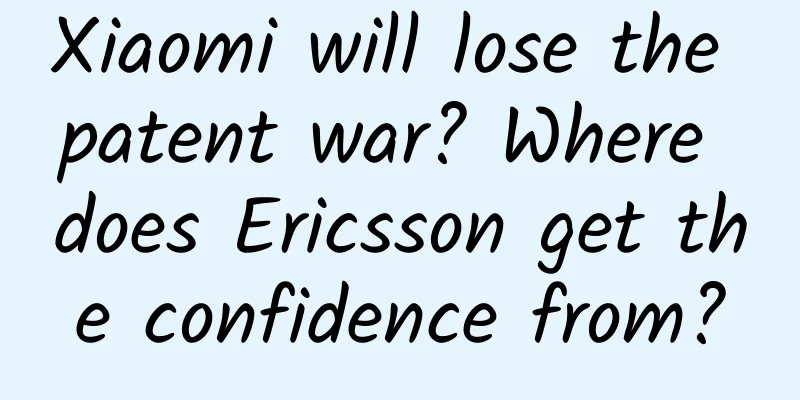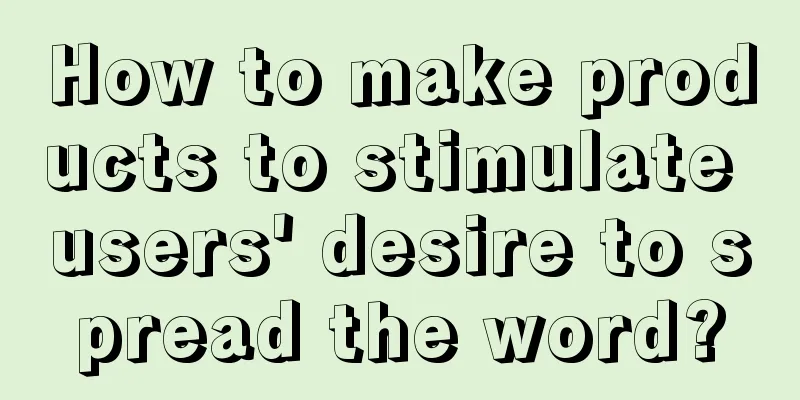Xiaomi will lose the patent war? Where does Ericsson get the confidence from?

|
"May 21st". This is probably one of the most important days for Xiaomi this year, apart from "April 8th". According to documents previously issued by the New Delhi High Court of India, the patent infringement case between Ericsson and Xiaomi will go to trial on May 21 this year. Now, there are less than ten days left until this day. This patent dispute, which began on December 5, 2014, will usher in a real showdown after half a year of "statements and counter-statements". Previously, when talking about the patent battle with Xiaomi, Ericsson's Chief Intellectual Property Officer (IPR) Kasim Afalahi publicly stated that Ericsson was confident of winning the lawsuit. It can be seen that although Ericsson executives did not say it explicitly, their implication was that "Xiaomi is bound to fail." So where does Ericsson get the confidence or confidence to say that it is "bound to win" or Xiaomi is bound to fail? In the words of Ericsson's Chief Intellectual Property Officer Kasim Afalahi, "Ericsson has never lost a patent lawsuit." In fact, the reason why Ericsson has never "lost" any patent infringement lawsuit in the past is mainly because Ericsson has solid intellectual property rights, especially patent accumulation. In contrast, Xiaomi, in addition to paying a huge deposit, first held a press conference in the local area, and then announced that it had received investment from the honorary chairman of the Tata Group, a local tyrant in India. While Xiaomi was flexing its muscles to the outside world, it also did not forget to "cling to the thighs". Returning to this PK caused by patents, how many patents does Xiaomi, which is about to engage in a patent showdown with Ericsson, lack from Ericsson? Based on the statistical data from the website of the State Intellectual Property Office, we have a detailed look at the patent "assets" of Ericsson and Xiaomi from multiple dimensions such as the number of patents, patent structure, patent trends and application time distribution. Perhaps we can understand where Ericsson's "confidence" comes from. Patent scale: Xiaomi and Ericsson have a significant gap, with the latter several times larger than the former From the above table, we can see that in terms of the total number of searchable patents, Ericsson is 2.7 times that of Xiaomi; in terms of the number of invention publications, Ericsson is 1.5 times that of Xiaomi; in terms of the number of invention authorizations, Ericsson is 45.3 times that of Xiaomi; in terms of the number of utility model patents, Xiaomi is 6.4 times that of Ericsson; and in terms of the number of design patents, Ericsson is 2.3 times that of Xiaomi. Simply put, Xiaomi is ahead of Ericsson only in utility model patents. In terms of total patent searches, invention authorizations and appearance designs, Ericsson is several to dozens of times that of Xiaomi. It should be noted that Ericsson, which has a history of hundreds of years, has formed a huge "corporate battleship" during its development. Among them, there are more than 40 corporate entities holding patents. Among them, most of the patents are mainly held by more than ten companies including Ericsson of Sweden NA (parent company), Sony Ericsson Mobile Communications AB, Sony Ericsson Mobile Communications AG, Ericsson Telephone AG, Ericsson (China) Communications Co., Ltd. Patent structure: Xiaomi's invention patent fortress needs to be strengthened As we all know, among the three major types of patents, the technical "gold content" is ranked from high to low as follows: invention patents, utility model patents and design patents. In addition, this "gold content" ranking is also a reflection of the difficulty of patent authorization. Specifically, invention patents and utility model patents have very high requirements for the "novelty, creativity and practicality" of invention applications, while design patents emphasize "obvious distinction", that is, "no duplication". It is worth mentioning that my country established the "utility model" in the patent system for special historical reasons and background. The purpose is to encourage the creation of small inventions with low costs and short development cycles, and to adapt to the needs of economic development more quickly. In fact, most countries, including Europe and the United States, have not established separate "utility model" patents. Therefore, the patent layout of international patent giants including Qualcomm and Ericsson rarely involves utility model patents. From the above figure, we can see that among the authorized patents, Ericsson's proportions in invention patents, utility models, and appearance designs are 85%, 1%, and 14%, respectively, while Xiaomi's proportions are 15%, 37%, and 48%, respectively. Obviously, from the perspective of patent structure, Ericsson attaches great importance to invention patent layout, while Xiaomi is stronger in appearance design. Xiaomi's patent structure of "light on invention and heavy on appearance" makes Xiaomi's overall patent "defense capability" very limited, and it cannot withstand the "patent torture" of mobile phone patent giants. Response strategy: Both independent research and development and patent acquisition must be "hard" In the past six months, Xiaomi's "shortcomings" in patents have improved. From the table above, we can see that compared with October last year, Xiaomi's total patent searches increased by 50%, the number of invention authorizations increased by 2.2 times, and the appearance design also increased significantly by 56%. Previously, Xiaomi Vice President Lin Bin said, "In 2015, Xiaomi's goal is 2,000 patents, which will double to 4,000 in 2016, and double again to 8,000 in 2017. These are all patent inventions and do not include appearance patents." As mentioned above, although Xiaomi is trying to "catch up" with the mobile phone patent giants by increasing its independent research and development efforts, the patent gap between Xiaomi and the giants has not been significantly narrowed due to the long patent review and authorization cycle. In fact, as a representative of smartphone manufacturers, many of HTC's practices or lessons are worth learning and reference for Xiaomi. First, from the perspective of patent structure, HTC's proportions of invention patents, utility models and designs are 74%, 9% and 17% respectively. The overall patent structure is very similar to Ericsson's. Secondly, in terms of response strategy, while HTC is doing a good job in its own patent research and development, it is also actively taking acquisitions to enrich its patent "arsenal". In fact, HTC, which started out as a contract manufacturer, did not have many patents at the beginning. It was not until the patent war with Apple in 2010 that it realized that "without food in hand, the heart will be panicked." In addition to strengthening its own patent applications, it also invested huge manpower and material resources to actively acquire patents. In April 2011, one year after the patent tug-of-war between HTC and Apple, HTC spent US$75 million to acquire more than 80 4G LTE patents from ADC Telecommunications in the United States to ensure its ability to face competition in the US market. In July of the same year, it acquired S3 Graphics for US$300 million, obtaining 235 authorized patents and pending patents from the latter, acquiring key graphics processing technology, and further strengthening its bargaining chips in negotiations with Apple. Obviously, for Xiaomi, to deal with the "patent suppression" of mobile phone patent giants including Ericsson, it is not enough to rely solely on independent research and development. It also needs to consider strengthening its patent "strength" through acquisitions. As for the showdown with Ericsson in the Indian market, whether it is through strengthening independent research and development or acquisitions, it may be difficult to quench thirst with distant water. For Xiaomi, if the inventory pressure is not great, it may be possible to use the "delay tactic" to extend the litigation cycle and complete the shipment of old models as soon as possible, in order to pave the way or make way for new models with more independent intellectual property rights; if the inventory pressure is greater, then it needs to reach a settlement with Ericsson as soon as possible, otherwise, the longer the battle line is, the more extra losses it may suffer. As a winner of Toutiao's Qingyun Plan and Baijiahao's Bai+ Plan, the 2019 Baidu Digital Author of the Year, the Baijiahao's Most Popular Author in the Technology Field, the 2019 Sogou Technology and Culture Author, and the 2021 Baijiahao Quarterly Influential Creator, he has won many awards, including the 2013 Sohu Best Industry Media Person, the 2015 China New Media Entrepreneurship Competition Beijing Third Place, the 2015 Guangmang Experience Award, the 2015 China New Media Entrepreneurship Competition Finals Third Place, and the 2018 Baidu Dynamic Annual Powerful Celebrity. |
<<: The Internet is concentrated in Beijing, so what is the lag in Shanghai?
Recommend
Without the traffic from NetEase and Alipay, how can ordinary products spread themselves and go viral?
There are unknown secrets behind every screen-swe...
Tips for developing a big Tik Tok account that attracts a lot of fans!
So what kind of influencers have more long-term a...
How much does a generator cost? How much does a household generator cost?
The prices of units of different brands and confi...
To prevent obesity, should you eat like a pig?
You may not believe it, but some scientists sugge...
Losing money to gain publicity? The business logic behind LeTV's motherboard upgrade for 570,000 users
"For the past three years, LeTV has always h...
Exploring the Android system: dumpsys command to obtain detailed information about system services
dumpsys is an executable file in the Android syst...
How much does Baidu Aicaigou promotion cost? How much does Baidu Aicaigou membership cost per year?
I believe that many business owners are currently...
Can ASO be performed in the Android Market? Do you know how to do it?
Many domestic channels are based on quantity, but...
Top 10 scientific breakthroughs of 2021, AI is on the list
On November 17, 2021, Science magazine released t...
How much does it cost to customize the Wuhai online recharge mini program?
There is no fixed price for the customized Wuhai ...
How to put your own store on WeChat mini program? Where is the WeChat mini program?
Q: How do I put my store on the WeChat mini progr...
Xiaomi is involved in a patent infringement storm again: Is it because a big tree attracts the wind or because a big store bullies customers?
When it comes to innovation and innovation protect...
Common knowledge that all Android developers should know
[[155312]] Software Development Process A complet...
Attention! Eating unripe beans can cause poisoning!
Review expert: Peng Guoqiu, deputy chief physicia...
How to "save yourself" for sensitive skin? Scientific skin care, repair skin barrier in 28 days
April brings the blooming season Many sisters hav...









